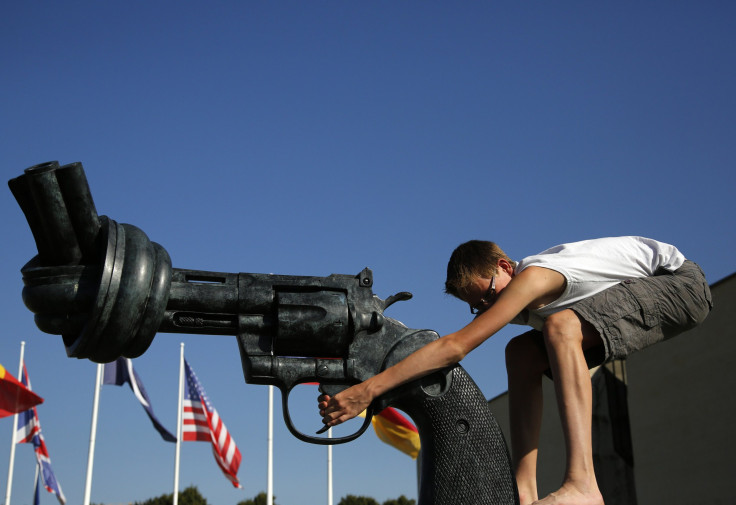Gunshot Wounds Hospitalize 20 US Children Every Day, Study Underlines ‘Toll Of Gun-Related Injuries’

Gun violence among children in the U.S. often gets major media play after some terrible event, such as the 2012 Sandy Hook Elementary School shooting. But deaths and injuries related to school shootings represent only a small fraction of gun-related injuries in U.S. children. Another little-known statistic is the number of children injured daily by accidental or gang-related gun violence. According to new analysis of national data on deaths and injuries in children, 20 children aged 19 and younger are hospitalized with gun injuries in the U.S. every day.
The results of the study, published online in the journal Pediatrics, were based on statistics gathered from 2009. Researchers found that in that year, 7,391 children were hospitalized for gun-related injuries. The majority of those injuries, 84 percent, involved young males. Hospitalizations were highest among teens between the ages of 15 and 19. According to the data collected, deaths occurred in 6.1 percent of children and adolescents. Assaults were the most frequent cause of hospitalizations, and suicide attempts were the least. Other causes of injury included unintentional or accidental gunshots.
“Despite recent national attention on deaths from firearms, little information exists about children and adolescents who are hospitalized for firearm injuries,” the authors of the study noted. “The objective was to determine the national frequency of firearm-related hospitalizations in the United States in children, compare rates by cause and demographics, and describe hospitalized cases.”
Researchers found that injuries in kids under the age of 15 were mostly unintentional, whereas gun-related injuries in adolescents over 15 were mostly assault-related. Most of those teens were African-American or Latino, who experienced gun-related injuries at a rate 10 times higher than young white males.
According to the U.S. Centers for Disease Control and Prevention, 225,000 children between the ages of 0 and 19 are hospitalized annually and almost 9 million children are treated for their injuries in hospital emergency departments. Roughly 9,000 children die each year from unintentional injuries – things like motor vehicle accidents, suffocation, drowning, poisoning and falls.
The new study noted that of the 9,000 deaths of children each year, 453 of those occurred among children in the hospital who were admitted for gunshot wounds.
“All are unnecessary hospitalizations because preventing gun violence is something that can actually be done,” Dr. John Leventhal, the study’s lead author and a professor of pediatrics at the Yale School of Medicine, told NBC News.
Leventhal argues that the impacts of being injured in gun violence are not only immediate but also long-term. Many gunshot victims must seek medical treatment and mental health treatment for years after suffering injury.
"This is a tragedy,” Leventhal told WebMD. “There are substantial injuries to these children that may have lifelong consequences."
Gun injuries among U.S. children are related to several factors, including gang violence, fights or disagreements, and accidental discharge of a firearm. But one thing remains constant: "They all relate to access to guns,” Leventhal said.
"These data highlight the toll of gun-related injuries that extends beyond high-profile cases, and those children and adolescents who die before being hospitalized. Pediatricians and other health care providers can play an important role in preventing these injuries through counseling about firearm safety, including safe storage," Leventhal said.
The safest way to store a gun is to keep the firearm unloaded and locked in a safe, with the ammo locked in a separate safe. But curbing child-related gunshot injuries will require further action on the part of politicians and the public alike.
“In general, we need to be doing everything we can to be sure that only responsible adults have access to guns,” pediatrician Dr. Claire McCarthy wrote in an article for Boston.com. “There are way too many loopholes and ways that guns end up in the hands of youth (and others who shouldn't have them) who use them on each other. We need to close those loopholes. It should be hard to get a gun--and we should know the background and mental health status of people who get them.”
© Copyright IBTimes 2024. All rights reserved.






















